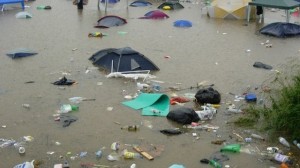Music festival campsites
Ingress
We have reached the stage where our customers have travelled to site, queued to gain entry, got their wristbands and been searched. Now they are free to go and camp up and let the party start.
Campsites are separated into smaller areas; through the introduction of fire lanes. Simple pathways where you can fit a fire tender up if the place goes up in flames. Handy things as they allow the campsite to create smaller designated areas and given names to allow you to remember where you camped; even after 12 ciders and half a bottle of Vodka. It also lets you wander around the campsite without weaving your way in and out of tents and the lethal guy line.
This leads to the naming of campsites and for some the decision of where to camp. There are several lines of thought behind this; the- I always go there camp, the- closest campsite to the arena camp, the- one with the cleanest toilets camp, the- one that the party happens in camp or the one that had space left camp.
Campsite design
- A layout of campsites that is suitable for the audience attending.
- Designated areas for camping and non camping.
- In case of an emergency there is sufficient space to egress into within the surrounding area.
- Not so far away from the arena that the distance would put people off using.
- Designated sanitation units.
- Provision for catering.
- The land used will not suffer from the influences of weather; heavy rain creating flooding.
Campsite information
- Customers should be informed of the campsite layout before they arrive; via websites, social media or email drops
- Stewards should be familiar with the layout and facilities to pass onto the customers
- Maps should be made available; steward instructions, maps, posters around the site, on social media and websites, from information points and on hand outs.
- Customer information or help points
- Volunteers providing information around the site.
Campsite management
- Stewarding to patrol the campsites
- Watchtowers to overlook greater areas
- Observation of density and land use within each camping area.
- Regular meetings to determine occupancy levels within each camping area
- Use of stewarding and volunteers to direct customers to areas with less density
- Using social media to pass information further and faster.
This blog is only focusing on crowd management, not security, fire prevention or health and safety in a traditional manner. We are looking at how we fit the amount of customers into a campsite.
In the last couple of bits I have used the terms; density and level of fill. This is where the management team work out a percentage of how full a campsite is – 0%, there is no one in that campsite or 100%, there are that many tents you cannot even see a blade of grass.
In the past 25 years the purple guide (the event safety guide) has increased the amount of tents that use a specified area on a campsite. This is telling us that more people are using the same amount of space than they did 25 years ago on a campsite. So does this mean that there is less space in between each tent, to allow this to happen?
What other factors could increase the density of a campsite? How about the size of the tents being used?
It has been observed over recent years that the size of tents being used by customers is increasing (the observations were made by me, the blogger, the person standing knee deep in mud). When I got off the site post event, I had a look into this.
Many retailers now provide festival camping packs, and due to the ability to buy in bulk, the price of these packs has plummeted. This allows the customers to buy more for less; so what can they get?
A typical festival pack:- tent, sleeping bag, air bed, camping chairs and lights.
If a group of friends travelling to a festival choose to chip in money and buy this the price of the pack is split over the group. Example – 8 man tent and extras costs £160.00. For each of the group the camping will cost £20. If the campsite is open 4 nights; that is £5 per night to camp.
This brings with it a question of standard of living and enjoyment. With the cost of the tent being so cheap, why fill it with 8 people? If you decide to only allow 4 people to use the tent, they get double the room they need and a better experience. A win for the campers, but a loss for the campsite managers. Why?
If each customer was to follow this example, we would need a campsite double the size we have to accommodate all the additional space needed. It is not believed or shown that everyone will do this, but with every person that does the space available decreases and the density increases.
This creates a tipping point in filling up a campsite. It is now harder to judge the gaps in between tents – a customer will stand in a fire lane to look for space, if it is not easy to find then that campsite is full to them.
The mix of large tents and small tents also creates a poor use of the available space. In an ideal world campsites would be made to military specifications and the use of space maximised in an orderly manner. This is never going to happen, and the chaotic patterns on campsites will continue till someone comes up with a better idea.
Eventually everyone will arrive, camp and get the party started. So we are ready to move onto the next stage.







